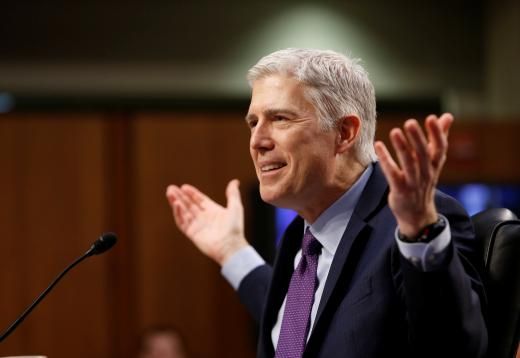Joanne Kyger with Jack Boyce, on the Bolinas mesa: photographer unknown, 1969

Cat: photo by Jo Wallace, 20 October 2013
Tuesday, October 28
It was a beautiful golden day
Now a black split shape
scuttles under
de foot. So long, Sayonara.
The fat cat lays down
dozing. I could use a little rest too
I only slept 11 hours last night,
wrote some letters, swept the floor,
planted 2 rows of onions, snow peas
And now I am looking forward
to washing my hair.
from All This Every Day, 1975

[Untitled]: photo by Pinel777, 3 March 2014
what I wanted to say
was in the broad
sweeping
form of being there
I am walking up the path
I come home and wash my hair
I am bereft
I dissolve quickly
I am everybody
from Joanne, 1970

Play: photo by Danielle Houghton, 25 November 2011
Into the party, with engraved invitations, I am bored when
I realize the champagne in the decrepit bowl is going to get
filled up a lot. Well then, on the greens in front of the
Mansion are walking Tom Clark and Ted Berrigan, what chums!
Do you think I could possibly fall in step, as they turn same
to far flung university on horizon, gleaming. You bet your
life not. The trouble, says Ted, with you Joanne, is that
you're not intelligent enough.
from All This Every Day, 1975

La Palma: photo by Julie Hrudova, 12 November 2016
"Snow fall..." Snow fall on green leaves
Eye is twitching quite dreadfully
I'm going to be more cool
and soften the dreadful hate
and pity I have in my heart
October 25, 1992
Boulder
from Again: Poems 1989-2000, 2011

[Dhaka]: photo by Muhammad Imam Hasan, 27 February 2017
"I am the commander
I do not need to explain why I do things.
That's the interesting thing about being
President.
Maybe someone needs to explain to ME
why they say something, but I don't feel
I owe anyone an explanation."
USA TODAY 11/25/02
Direct quote
from The Distressed Look, 2004

Actually, Trump has pretty decent sense of the difference between acting/looking juvenile. Not today tho #TonkaOp #AuthoritarianFail: image via Reading The Pictures @ReadingThe Pix, 23 March 2017
Rock
Hit absolute rock bottom
Are you there rock? No?
No rock on bottom
April 2003
from The Distressed Look, 2004

Man smashes TV at "rage room" in Cairo. Seems medium still the message. Photo @reuterspictures: image via Reading The Pictures @ReadingThePix, 22 March 2017
You got MY vote
just let me know
who you are
Is that a dog howling?
April 2003
from The Distressed Look, 2004

[Tel Aviv]: Ilan Burla, 31 March 2016
From our 'leaders' -- please be
as frightened as you can in apartment
buildings, bridges and airports--
But really
you're on your own,
you rattled and oppressed citizens
of the 'free' world --
berserk jackals of the moment are after you!
Look carefully at those you know --
corporate crooks! have fucked
with your energy!
'Freedom' is dubiously hyped to a world
against which 'our country' seems to be waging a war!
Yes, a war against The World! which is full of
creepy crawly evil turrrists.
'You' my government,
have made us Totally Unpopular
May 30, 2002from The Distressed Look, 2004

This
big spotted cat was painted more than 30,000 years ago in Chauvet Cave.
It is the oldest known image of a leopard #IceAgeArt: image via The Ice Age @Jamie_Woodward_, 6 March 2017

#Syria A rebel fighter rests on the ground east of al-Bab.
By @khalelashawe @reuterspictures: image via Photojournalism @photojournalink, 22 March 2017

IRAQ - A young man sits in shock next to a blood pool after a mortar shell was fired by IS fighters on civilians in Mosul. Photo Ahmad Al-Rubaye: image via Frédérique Geffard @fgeffardAFP, 22 March 2017

#Jerusalem Ultra-Orthodox Jews celebrate the holiday of #Purim #Israel By @IYefimovich @GettyImagesNews #photojournalism: image via Photojournalism @photojournalink, 22 March 2017

MEDITERRANEAN
SEA - Migrants wait to be rescued from a sinking dingey off the Libyan
coastal town of Zawiyah. photo Abdullah Elgamoudi #AFP: image via Frédérique Geffard @fgeffardAFP, 22 March 2017
AFGHANISTAN
- A girl looks on a window of Hazrat-e-Ali shrine at Nowruz festivities
which mark new year in Mazari-i-Sharif. Photo @Farshadusyan: image via Frédérique Geffard @fgeffardAFP, 21 March 2017
GREECE
- Children attend the celebrations of Nowruz at the Hockey refugee camp
situated at former Olympic Complex near Athens. @lgouliam: image via Frédérique Geffard @fgeffardAFP, 22 March 2017


Maimoona, 7, poses for a
photograph in a poor neighborhood on the outskirts of Kabul,
Afghanistan, Wednesday, March 22, 2017.: photo by Rahmat Gul/AP, 22 March 2017
SYRIA
- The White Helmets prepare the body of one of their comrades killed in
an air strike on Mohammadiyah for burial. @amer_almohibany: image via Frédérique Geffard @fgeffardAFP, 22 March 2017

GAZA
STRIP - Funeral of Abou Azra in Rafah after been killed before dawn by
Israeli artillery fire in Gaza. Photo @saidkhatib #AFP: image via Frédérique Geffard @fgeffardAFP, 22 March 2017

Mourners carry the body
oof 18-year-old Yousef Abu Azraout out of the family house during his
funeral in the Rafah refugee camp, southern Gaza Strip, Wednesday, March
22, 2017. Palestinian officials said Al-Qidra was killed early
Wednesday in Israeli shelling near the border fence separating Gaza and
Israel. The Israeli military said its forces fired on three suspected
militants who had approached the security fence.: photo by Khalil
Hamra/AP, 22 March 2017

GAZA CITY - A girl sits outside her home with balloons in her hand in Gaza City. Photo @mohmabed: image via Frédérique Geffard @fgeffardAFP, 22 March 2017

IRAQ
- Civilians flee Mosul as Iraqi forces advance in their fighting
against IS fighters during #MosulOffensive Photo @ahmadgharabli4 #AFP: image via Frédérique Geffard @fgeffardAFP, 22 March 2017
IRAQ
- The Iraqi counter-terrorism service advance towards the Yabasat
neighbourhood during #MosulOffensive Photo Ahmad Al-Rubaye #AFP: image via Frédérique Geffard @fgeffardAFP, 23 March 2017

400,000 'trapped' in west Mosul's Old City: UN Photo @gharabli_ahmad #AFP: image via AFP Photo @AFPphoto, 23 March 2017


Alia Ahmed sits on the side of the road with her 40 day-old grandson Abdullah after receiving food supplies in a neighborhood recently liberated by Iraqi security forces on the western side of Mosul, Iraq, Wednesday, March 22, 2017.: photo by Felipe Dana/AP, 22 March 2017

Iraqi civilians walk in
a neighborhood recently liberated by Iraqi security forces on the
western side of Mosul, Iraq, Wednesday, March 22, 2017.: photo by Felipe
Dana/AP, 22 March 2017

Alia Ahmed sits on the side of the road with her 40 day-old grandson Abdullah after receiving food supplies in a neighborhood recently liberated by Iraqi security forces on the western side of Mosul, Iraq, Wednesday, March 22, 2017.: photo by Felipe Dana/AP, 22 March 2017

SYRIA - A rebel fighter walks past a roller shutter bearing the Syrian
flag, in Rahbet Khattab in the Hama province. Photo @omar_hajkadour:
image via Frédérique Geffard @fgeffardAFP, 23 March 2017


BULGARIA - An elderly woman pulls her shopping cart in front of an abandoned residential building on the outskirts of Pernik. Photo @dilkoff: image via Frédérique Geffard @fgeffardAFP, 23 March 2017

INDIA - Children play outside their home in the slums of New Delhi. Photo @Chandanphoto #AFP: image via Frédérique Geffard @fgeffardAFP, 23 March 2017

Indian women collect water from a shared tap at a slum in Mumbai, India, Wednesday, March 22, 2017. India has the world's highest number of people without access to clean water. According to UNICEF, the U.N.'s children's agency, nearly 78 million Indians — or about 5 percent of the country's 1.3 billion population — must make do with contaminated water sources or buy water at high rates.: photo by Rafiq Maqbool/AP, 22 March 2017

Indian women collect water from a shared tap at a slum in Mumbai, India, Wednesday, March 22, 2017. India has the world's highest number of people without access to clean water. According to UNICEF, the U.N.'s children's agency, nearly 78 million Indians — or about 5 percent of the country's 1.3 billion population — must make do with contaminated water sources or buy water at high rates.: photo by Rafiq Maqbool/AP, 22 March 2017
Playtime

[Untitled]: photo by vineet vohra, 9 July 2014

[Untitled]: photo by vineet vohra, 9 July 2014

[Untitled]: photo by vineet vohra, 9 July 2014

Small World: photo by Setsiri Silapasuwanchai, 19 April 2016

Small World: photo by Setsiri Silapasuwanchai, 19 April 2016

Small World: photo by Setsiri Silapasuwanchai, 19 April 2016

[Untitled]: Soumyendra Saha, 15 June 2016

[Untitled]: Soumyendra Saha, 15 June 2016

[Untitled]: Soumyendra Saha, 15 June 2016

chimal ... [Chimalhuacan, Mexico]: photo by Fermin Guzman, 1 February 2012

chimal ... [Chimalhuacan, Mexico]: photo by Fermin Guzman, 1 February 2012

chimal ... [Chimalhuacan, Mexico]: photo by Fermin Guzman, 1 February 2012

[Untitled]: photo by vineet vohra, 12 November 2016

[Untitled]: photo by vineet vohra, 12 November 2016

[Untitled]: photo by vineet vohra, 12 November 2016

[Chennai]: photo by Viduthalai Mani Dharamaraj, 18 March 2017

[Chennai]: photo by Viduthalai Mani Dharamaraj, 18 March 2017

[Chennai]: photo by Viduthalai Mani Dharamaraj, 18 March 2017

People wave from the
flooded streets of Piura, Peru, Wednesday, March 22, 2017. Intense
rains, overflowing rivers, mudslides and flooding have hit the country,
the worst seen in two decades, according to Peruvian authorities.: photo by Martin Mejia/AP, 22 March 2017

Starbucks employee Ed Devlin reacts as he views a 360 video of a Starbucks' Costa Rica coffee farm at a display before the company's annual shareholder meeting, Wednesday, March 22, 2017, in Seattle.: photo by Elaine Thompson/AP, 22 March 2017
The buying of an American corporate oligarchy: "And if the President's a bozo? He's fine with that."

US President Trump enjoys his time in a driver's seat as he welcomes
truckers and CEOs to White House tp://u.afp.com/4gxP Photo
@JimWatson_AFP: image via Frédérique Geffard @fgeffardAFP, 23 March
2017
The
Reclusive Hedge-Fund Tycoon Behind the Trump Presidency: How Robert
Mercer exploited America’s populist insurgency: Jane Mayer, The New
Yorker, 27 March 2017
Last
month, when President Donald Trump toured a Boeing aircraft plant in
North Charleston, South Carolina, he saw a familiar face in the crowd
that greeted him: Patrick Caddell, a former Democratic political
operative and pollster who, for forty-five years, has been prodding
insurgent Presidential candidates to attack the Washington
establishment. Caddell, who lives in Charleston, is perhaps best known
for helping Jimmy Carter win the 1976 Presidential race. He is also
remembered for having collaborated with his friend Warren Beatty on the
1998 satire “Bulworth.” In that film, a kamikaze candidate abandons the
usual talking points and excoriates both the major political parties and
the media; voters love his unconventionality, and he becomes improbably
popular. If the plot sounds familiar, there’s a reason: in recent
years, Caddell has offered political advice to Trump. He has not worked
directly for the President, but at least as far back as 2013 he has been
a contractor for one of Trump’s biggest financial backers: Robert
Mercer, a reclusive Long Island hedge-fund manager, who has become a
major force behind the Trump Presidency.
During
the past decade, Mercer, who is seventy, has funded an array of
political projects that helped pave the way for Trump’s rise. Among
these efforts was public-opinion research, conducted by Caddell, showing
that political conditions in America were increasingly ripe for an
outsider candidate to take the White House. Caddell told me that Mercer
“is a libertarian—he despises the Republican establishment,” and added, “He thinks that the leaders are corrupt crooks, and that they’ve ruined the country.”
Trump
greeted Caddell warmly in North Charleston, and after giving a speech
he conferred privately with him, in an area reserved for V.I.P.s and for
White House officials, including Stephen Bannon, the President’s top
strategist, and Jared Kushner, Trump’s son-in-law. Caddell is well known
to this inner circle. He first met Trump in the eighties. (“People said
he was just a clown,” Caddell said. “But I’ve learned that you should
always pay attention to successful ‘clowns.’ ”) Caddell shared the
research he did for Mercer with Trump and others in the campaign,
including Bannon, with whom he has partnered on numerous projects.
The
White House declined to divulge what Trump and Caddell discussed in
North Charleston, as did Caddell. But that afternoon Trump issued
perhaps the most incendiary statement of his Presidency: a tweet calling
the news media “the enemy of the American people.” The proclamation
alarmed liberals and conservatives alike. William McRaven, the retired
Navy admiral who commanded the 2011 raid that killed Osama bin Laden,
called Trump’s statement a “threat to democracy.” The President is known
for tweeting impulsively, but in this case his words weren’t
spontaneous: they clearly echoed the thinking of Caddell, Bannon, and
Mercer. In 2012, Caddell gave a speech at a conference sponsored by
Accuracy in Media, a conservative watchdog group, in which he called the
media “the enemy of the American people.” That declaration was promoted
by Breitbart News, a platform for the pro-Trump alt-right, of which
Bannon was the executive chairman, before joining the Trump
Administration. One of the main stakeholders in Breitbart News is
Mercer.
Mercer is the co-C.E.O. of
Renaissance Technologies, which is among the most profitable hedge
funds in the country. A brilliant computer scientist, he helped
transform the financial industry through the innovative use of trading
algorithms. But he has never given an interview explaining his political
views. Although Mercer has recently become an object of media
speculation, Trevor Potter, the president of the Campaign Legal Center, a
nonpartisan watchdog group, who formerly served as the chairman of the
Federal Election Commission, said, “I have no idea what his political
views are—they’re unknown, not just to the public but also to most
people who’ve been active in politics for the past thirty years.”
Potter, a Republican, sees Mercer as emblematic of a major shift in
American politics that has occurred since 2010, when the Supreme Court
made a controversial ruling in Citizens United v. Federal Election
Commission. That ruling, and several subsequent ones, removed virtually
all limits on how much money corporations and nonprofit groups can spend
on federal elections, and how much individuals can give to
political-action committees. Since then, power has tilted away from the
two main political parties and toward a tiny group of rich mega-donors.
Private
money has long played a big role in American elections. When there were
limits on how much a single donor could give, however, it was much
harder for an individual to have a decisive impact. Now, Potter said, “a
single billionaire can write an eight-figure check and put not just
their thumb but their whole hand on the scale—and we often have no idea
who they are.” He continued, “Suddenly, a random billionaire can change
politics and public policy—to sweep everything else off the table—even
if they don’t speak publicly, and even if there’s almost no public
awareness of his or her views.”
Through
a spokesman, Mercer declined to discuss his role in launching Trump.
People who know him say that he is painfully awkward socially, and
rarely speaks. “He can barely look you in the eye when he talks,” an
acquaintance said. “It’s probably helpful to be highly introverted when
getting lost in code, but in politics you have to talk to people, in
order to find out how the real world works.” In 2010, when the Wall Street Journal
wrote about Mercer assuming a top role at Renaissance, he issued a
terse statement: “I’m happy going through my life without saying
anything to anybody.” According to the paper, he once told a colleague
that he preferred the company of cats to humans.
Several
people who have worked with Mercer believe that, despite his oddities,
he has had surprising success in aligning the Republican Party, and
consequently America, with his personal beliefs, and is now uniquely
positioned to exert influence over the Trump Administration. In
February, David Magerman, a senior employee at Renaissance, spoke out
about what he regards as Mercer’s worrisome influence. Magerman, a
Democrat who is a strong supporter of Jewish causes, took particular
issue with Mercer’s empowerment of the alt-right, which has included
anti-Semitic and white-supremacist voices. Magerman shared his concerns
with Mercer, and the conversation escalated into an argument. Magerman
told colleagues about it, and, according to an account in the Wall Street Journal,
Mercer called Magerman and said, “I hear you’re going around saying I’m
a white supremacist. That’s ridiculous.” Magerman insisted to Mercer
that he hadn’t used those words, but added, “If what you’re doing is
harming the country, then you have to stop.” After the Journal
story appeared, Magerman, who has worked at Renaissance for twenty
years, was suspended for thirty days. Undaunted, he published an op-ed
in the Philadelphia Inquirer, accusing Mercer of “effectively
buying shares in the candidate.” He warned, “Robert Mercer now owns a
sizeable share of the United States Presidency.”
Nick
Patterson, a former senior Renaissance employee who is now a
computational biologist at the Broad Institute, agrees that Mercer’s
influence has been huge. “Bob has used his money very effectively,” he
said. “He’s not the first person in history to use money in politics,
but in my view Trump wouldn’t be President if not for Bob. It doesn’t
get much more effective than that.”
Patterson
said that his relationship with Mercer has always been collegial. In
1993, Patterson, at that time a Renaissance executive, recruited Mercer
from I.B.M., and they worked together for the next eight years. But
Patterson doesn’t share Mercer’s libertarian views, or what he regards
as his susceptibility to conspiracy theories about Bill and Hillary
Clinton. During Bill Clinton’s Presidency, Patterson recalled, Mercer
insisted at a staff luncheon that Clinton had participated in a secret
drug-running scheme with the C.I.A. The plot supposedly operated out of
an airport in Mena, Arkansas. “Bob told me he believed that the Clintons
were involved in murders connected to it,” Patterson said. Two other
sources told me that, in recent years, they had heard Mercer claim that
the Clintons have had opponents murdered.
The Mena story is one of several dark fantasies put forth in the nineties by The American Spectator, an archconservative magazine. According to Patterson, Mercer read the publication at the time. David Brock, a former Spectator
writer who is now a liberal activist, told me that the alleged Mena
conspiracy was based on a single dubious source, and was easily
disproved by flight records. “It’s extremely telling that Mercer would
believe that,” Brock said. “It says something about his conspiratorial
frame of mind, and the fringe circle he was in. We at the Spectator called them Clinton Crazies.”
Patterson
also recalled Mercer arguing that, during the Gulf War, the U.S. should
simply have taken Iraq’s oil, “since it was there.” Trump, too, has
said that the U.S. should have “kept the oil.” Expropriating another
country’s natural resources is a violation of international law. Another
onetime senior employee at Renaissance recalls hearing Mercer downplay
the dangers posed by nuclear war. Mercer, speaking of the atomic bombs
that the U.S. dropped on Hiroshima and Nagasaki, argued that, outside of
the immediate blast zones, the radiation actually made Japanese
citizens healthier. The National Academy of Sciences has found no
evidence to support this notion. Nevertheless, according to the onetime
employee, Mercer, who is a proponent of nuclear power, “was very excited
about the idea, and felt that it meant nuclear accidents weren’t such a
big deal.”
Mercer
strongly supported the nomination of Jeff Sessions to be Trump’s
Attorney General. Many civil-rights groups opposed the nomination,
pointing out that Sessions has in the past expressed racist views.
Mercer, for his part, has argued that the Civil Rights Act, in 1964, was
a major mistake. According to the onetime Renaissance employee, Mercer
has asserted repeatedly that African-Americans were better off
economically before the civil-rights movement. (Few scholars agree.) He
has also said that the problem of racism in America is exaggerated. The
source said that, not long ago, he heard Mercer proclaim that there are
no white racists in America today, only black racists. (Mercer,
meanwhile, has supported a super PAC, Black Americans for a Better Future, whose goal is to “get more Blacks involved in the Republican Party.”)
“Most
people at Renaissance didn’t challenge him” about politics, Patterson
said. But Patterson clashed with him over climate change; Mercer said
that concerns about it were overblown. After Patterson shared with him a
scientific paper on the subject, Mercer and his brother, Randall, who
also worked at the hedge fund, sent him a paper by a scientist named
Arthur Robinson, who is a biochemist, not a climate expert. “It looked
like a scientific paper, but it was completely loaded with selective
and biased information,” Patterson recalled. The paper argued that, if
climate change were real, future generations would “enjoy an Earth with
far more plant and animal life.” Robinson owns a sheep ranch in Cave
Junction, Oregon, and on the property he runs a laboratory that he calls
the Oregon Institute of Science and Medicine. Mercer helps subsidize
Robinson’s various projects, which include an effort to forestall aging.
Patterson
sent Mercer a note calling Robinson’s arguments “completely false.” He
never heard back. “I think if you studied Bob’s views of what the ideal
state would look like, you’d find that, basically, he wants a system
where the state just gets out of the way,” Patterson said. “Climate
change poses a problem for that world view, because markets can’t solve
it on their own.”
Magerman told the Wall Street Journal
that Mercer’s political opinions “show contempt for the social safety
net that he doesn’t need, but many Americans do.” He also said that
Mercer wants the U.S. government to be “shrunk down to the size of a
pinhead.” Several former colleagues of Mercer’s said that his views are
akin to Objectivism, the philosophy of Ayn Rand. Magerman told me, “Bob
believes that human beings have no inherent value other than how much
money they make. A cat has value, he’s said, because it provides
pleasure to humans. But if someone is on welfare they have negative
value. If he earns a thousand times more than a schoolteacher, then he’s
a thousand times more valuable.” Magerman added, “He thinks society is
upside down—that government helps the weak people get strong, and makes
the strong people weak by taking their money away, through taxes.” He
said that this mind-set was typical of “instant billionaires” in
finance, who “have no stake in society,” unlike the industrialists of
the past, who “built real things.”
Another
former high-level Renaissance employee said, “Bob thinks the less
government the better. He’s happy if people don’t trust the government.
And if the President’s a bozo? He’s fine with that. He wants it to all fall down.”


All
we get from this, w all the missing depth and critical repercussions,
is that the system is seriously out of whack. #ReutersEditorsChoice: image via Reading The Pictures @ReadingThePix, 22 March 2017
The
2016 Presidential election posed a challenge for someone with Mercer’s
ideology. Multiple sources described him as animated mainly by hatred of
Hillary Clinton. But Mercer also distrusted the Republican leadership.
After the candidate he initially supported, Senator Ted Cruz, of Texas,
dropped out of the race, Mercer sought a disruptive figure who could
upend both the Democratic Party and the Republican Party. Patterson told
me that Mercer seems to have applied “a very Renaissance Technologies
way of thinking” to politics: “He probably estimated the probability of
Trump winning, and when it wasn’t very high he said to himself, ‘O.K.,
what has to happen in order for this twenty-per-cent thing to occur?’
It’s like playing a card game when you haven’t got a very good hand.”
Mercer, as it happens, is a superb poker player, and his political gamble appears to have paid off. Institutional Investor has called it “Robert Mercer’s Trade of the Century.”
In
the 2016 campaign, Mercer gave $22.5 million in disclosed donations to
Republican candidates and to political-action committees. Tony Fabrizio,
a Republican pollster who worked for the Trump campaign, said that
Mercer had “catapulted to the top of the heap of right-of-center power
brokers.” It’s worth noting that several other wealthy financiers,
including Democrats such as Thomas Steyer and Donald Sussman, gave even
more money to campaigns. (One of the top Democratic donors was James
Simons, the retired founder of Renaissance Technologies.) Nevertheless,
Mercer’s political efforts stand apart. Adopting the strategy of Charles
and David Koch, the billionaire libertarians, Mercer enlarged his
impact exponentially by combining short-term campaign spending with
long-term ideological investments. He poured millions of dollars into
Breitbart News, and—in what David Magerman has called “an extreme
example of modern entrepreneurial philanthropy”—made donations to dozens
of politically tinged organizations.
Like
many wealthy families, the Mercers have a private foundation. At first,
the Mercer Family Foundation, which was established in 2004, had an
endowment of only half a million dollars, and most of its grants went to
medical research and conventional charities. But by 2008, under the
supervision of Mercer’s ardently conservative daughter, Rebekah, the
foundation began giving millions of dollars to interconnected nonprofit
groups, several of which played crucial roles in propagating attacks on
Hillary Clinton. By 2015, the most recent year for which federal tax
records are available, the foundation had grown into a $24.5-million
operation that gave large sums to ultraconservative organizations.
On
top of this nonprofit spending, Mercer invested in private businesses.
He put ten million dollars into Breitbart News, which was conceived as a
conservative counterweight to the Huffington Post. The Web site freely
mixes right-wing political commentary with juvenile rants and racist
innuendo; under Bannon’s direction, the editors introduced a rubric
called Black Crime. The site played a key role in undermining Hillary
Clinton; by tracking which negative stories about her got the most
clicks and “likes,” the editors helped identify which story lines and
phrases were the most potent weapons against her. Breitbart News has
been a remarkable success: according to ComScore, a company that
measures online traffic, the site attracted 19.2 million unique visitors
in October.
Mercer also invested
some five million dollars in Cambridge Analytica, a firm that mines
online data to reach and influence potential voters. The company has
said that it uses secret psychological methods to pinpoint which
messages are the most persuasive to individual online viewers. The firm,
which is the American affiliate of Strategic Communication
Laboratories, in London, has worked for candidates whom Mercer has
backed, including Trump. It also reportedly worked on the Brexit
campaign, in the United Kingdom.
Alexander
Nix, the C.E.O. of the firm, says that it has created
“profiles”—consisting of several thousand data points—for two hundred
and twenty million Americans. In promotional materials, S.C.L. has
claimed to know how to use such data to wage both psychological and
political warfare. “Persuading somebody to vote a certain way,” Nix has
said publicly, “is really very similar to persuading 14- to 25-year-old
boys in Indonesia to not join Al Qaeda.” Some critics suggest that, at
this point, Cambridge Analytica’s self-promotion exceeds its
effectiveness. But Jonathan Albright, an assistant professor of
communications at Elon University, in North Carolina, recently published
a paper, on Medium, calling Cambridge Analytica a “propaganda machine.”
As
important as Mercer’s business investments is his hiring of advisers.
Years before he started supporting Trump, he began funding several
conservative activists, including Steve Bannon; as far back as 2012,
Bannon was the Mercers’ de-facto political adviser. Some people who have
observed the Mercers’ political evolution worry that Bannon has become a
Svengali to the whole family, exploiting its political inexperience and
tapping its fortune to further his own ambitions. It was Bannon who
urged the Mercers to invest in a data-analytics firm. He also encouraged
the investment in Breitbart News, which was made through Gravitas
Maximus, L.L.C., a front group that once had the same Long Island
address as Renaissance Technologies. In an interview, Bannon praised the
Mercers’ strategic approach: “The Mercers laid the groundwork for the
Trump revolution. Irrefutably, when you look at donors during the past
four years, they have had the single biggest impact of anybody,
including the Kochs.”
Last summer,
Bannon and some other activists whom the Mercers have
supported—including David Bossie, who initiated the Citizens United
lawsuit—came together to rescue Trump’s wobbly campaign. Sam Nunberg, an
early Trump adviser who watched Mercer’s group take over, said, “Mercer
was smart. He invested in the right people.”
Bannon
and Rebekah Mercer have become particularly close political partners.
Last month, when Bannon denounced “the corporatist, globalist media” at
the Conservative Political Action Conference, in his first public
appearance since entering the White House, Rebekah Mercer was part of
his entourage. Bannon supports some initiatives, such as a major
infrastructure program, that are anathema to libertarians such as Robert
Mercer. But the Wall Street Journal has described Bannon
joking and swearing on the deck of the Mercers’ yacht, the Sea Owl, as
if he were a member of the family. Bannon assured me that the Mercers,
despite all their luxuries, are “the most middle-class people you will
ever meet.”
Robert
and Diana Mercer brought up their three daughters in a modest home near
I.B.M.’s Thomas J. Watson Research Center, in Westchester County. The
girls attended public schools, and Robert and Diana worried about paying
three college tuitions. According to Donna D’Andraia, a family friend,
Diana was a PTA member and a “tiger mom” who “made sure that the girls
did all the right things—they were in the honor society, and stayed out
of trouble.” D’Andraia recalled Diana saying that Robert was brilliant,
but D’Andraia found it hard to tell, because “he was very quiet—he
didn’t talk to anybody.”
The
eldest Mercer daughter, Jennifer, or Jenji, attended Stanford. Rebekah,
the middle daughter, enrolled at Cornell and then transferred to
Stanford. Majoring in biology and math, she graduated in 1996; a few
years later, she got an M.A., in operations research. The youngest
daughter, Heather Sue, “was the spitfire,” D’Andraia recalled. When
Heather Sue was a junior in high school, she tried out to be a place
kicker on the football team. She made it, and, after enrolling at Duke
University, she joined its varsity squad. When the Duke coach refused to
treat her as the equal of her male teammates, she sued the school for
gender discrimination, and won two million dollars in damages. Ron
Santavicca, Heather Sue’s high-school coach, described the Mercers, who
still invite him to their Christmas parties, as “the salt of the earth.”
He added, “The whole family is very determined. When they have a
mission, they go after it.”
In
1993, when Nick Patterson mailed Robert Mercer a job offer from
Renaissance, Mercer threw it in the trash: he’d never heard of the hedge
fund. At the time, Mercer was part of a team pioneering the use of
computers to translate languages. I.B.M. considered the project a bit of
a luxury, and didn’t see its potential, though the work laid the
foundation for Google Translate and Apple’s Siri. But Mercer and his
main partner, Peter Brown, found the project exciting, and had the
satisfaction of showing up experts in the field, who had dismissed their
statistical approach to translating languages as impractical. Instead
of trying to teach a computer linguistic rules, Mercer and Brown
downloaded enormous quantities of dual-language documents—including
Canadian parliamentary records—and created code that analyzed the data
and detected patterns, enabling predictions of probable translations.
According to a former I.B.M. colleague, Mercer was obsessive, and at one
point took six months off to type into a computer every entry in a
Spanish-English dictionary. Sebastian Mallaby, in his 2010 book on the
hedge-fund industry, “More Money Than God,” reports that Mercer’s boss
at I.B.M. once jokingly called him an “automaton.”
In
2014, Mercer accepted a lifetime-achievement award from the Association
for Computational Linguistics. In a speech at the ceremony, Mercer, who
grew up in New Mexico, said that he had a “jaundiced view” of
government. While in college, he had worked on a military base in
Albuquerque, and he had showed his superiors how to run certain computer
programs a hundred times faster; instead of saving time and money, the
bureaucrats ran a hundred times more equations. He concluded that the
goal of government officials was “not so much to get answers as to
consume the computer budget.” Mercer’s colleagues say that he views the
government as arrogant and inefficient, and believes that individuals
need to be self-sufficient, and should not receive aid from the state.
Yet, when I.B.M. failed to offer adequate support for Mercer and Brown’s
translation project, they secured additional funding from DARPA,
the secretive Pentagon program. Despite Mercer’s disdain for “big
government,” this funding was essential to his early success.
Meanwhile,
Patterson kept asking Mercer and Brown to join Renaissance. He thought
that their technique of extracting patterns from huge amounts of data
could be applied to the pile of numbers generated daily by the global
trade in stocks, bonds, commodities, and currencies. The patterns could
generate predictive financial models that would give traders a decisive
edge.
In the spring of 1993, Mercer
experienced two devastating losses: his mother was killed, in a car
crash, and his father, a biologist, died six weeks later. With life’s
precariousness made painfully clear, and with tuition bills mounting, he
decided to leave I.B.M. for a higher-paying job at Renaissance. Brown
made the leap, too.
Renaissance
was founded by James Simons, a legendary mathematician, in 1982. Simons
had run the math department at Stony Brook University, on Long Island,
and the hedge fund took a uniquely academic approach to high finance.
Andrew Lo, a finance professor at M.I.T.’s Sloan School of Management,
has described it as “the commercial version of the Manhattan Project.”
Intensely secretive and filled with people with Ph.D.s, it has been
sensationally profitable. Its Medallion Fund, which is open only to the
firm’s three hundred or so employees, has averaged returns of almost
eighty per cent a year, before fees. Bloomberg News has called the
Medallion Fund “perhaps the world’s greatest moneymaking machine.”
In
“More Money Than God,” Mallaby, who interviewed Mercer, describes his
temperament as that of an “icy cold poker player”; Mercer told him that
he could not recall ever having had a nightmare. But Mercer warms up
when talking about computers. In the 2014 speech, he recalled the first
time he used one, at a science camp, and likened the experience to
falling in love. He also spoke of the government lab in New Mexico. “I
loved the solitude of the computer lab late at night,” he said. “I loved
the air-conditioned smell of the place. I loved the sound of the disks
whirring and the printers clacking.” The speech lasted forty
minutes—“more than I typically talk in a month,” he noted.
Patterson
told me that when Mercer arrived at Renaissance the firm’s equities
division was lagging behind other areas, such as futures trading. Mercer
and Brown applied their algorithms to equities trading. “It took
several years,” Patterson recalled, but the equities group eventually
accounted for the largest share of the Medallion Fund’s profits. Mercer
and Brown’s code took into account nearly every conceivable predictor of
market swings; their secret formula became so valuable that, when a
pair of Russian mathematicians at the firm tried to take the recipe
elsewhere, the company initiated legal action against them.
Renaissance’s
profits were further enhanced by a controversial tax maneuver, which
became the subject of a 2014 Senate inquiry. According to Senate
investigators, Renaissance had presented countless short-term trades as
long-term ones, improperly avoiding some $6.8 billion in taxes. The
Senate didn’t allege criminality, but it concluded that Renaissance had
committed “abuses.” The I.R.S. demanded payment. (Renaissance defended
its practices, and the matter remains contested, leaving a very
sensitive material issue pending before the Trump Administration.)
The Medallion Fund made Renaissance employees among the wealthiest people in the country. Forbes
estimates that Simons, who has the biggest share, is worth eighteen
billion dollars. In 2009, Simons stepped aside, to focus on
philanthropy, and named Mercer and Brown co-C.E.O.s. Institutional Investor’s Alpha estimates that, in 2015, Mercer earned a hundred and thirty-five million dollars at Renaissance.
Mercer’s
fortune has allowed him and his family to indulge their wildest
material fantasies. He and Diana moved into a waterfront estate in Head
of the Harbor, a seaside community on Long Island, and called the
property Owl’s Nest. Mercer, a gun enthusiast, built a private pistol
range there. (He is also a part owner of Centre Firearms, a company that
claims to have the country’s largest private cache of machine guns, as
well as a weapon that Arnold Schwarzenegger wielded in “The
Terminator.”) At Owl’s Nest, Mercer has installed a $2.7-million
model-train set in his basement; trains chug through a miniature
landscape half the size of a basketball court. The toy train attracted
unwanted tabloid headlines, such as “Boo-hoo over 2m Choo-choo,” after Mercer sued the manufacturer for overcharging him. (The case was settled.)
Mercer
retains a domestic staff that includes a butler and a physician; both
accompany him whenever he travels. But this, too, has sparked bad
publicity. In 2013, three members of the household staff sued to recover
back wages, claiming that Mercer had failed to pay overtime, as
promised, and that he had deducted pay as punishment for poor work. One
infraction that Mercer cited as a “demerit” was a failure to replace
shampoo bottles that were two-thirds empty. This suit, too, was settled.
Mercer
has bought several spectacular yachts, including the Sea Owl, which is
two hundred and three feet long. A 2013 photo shows the gates of the
Tower Bridge, in London, raised high to allow it to proceed up the
Thames. The Sea Owl has a crew of eighteen, and features a hand-carved
“tree” that twists through four levels of decks. Designed, in part, as a
place where the extended Mercer family can gather, the yacht has many
fanciful and didactic touches for the Mercer grandchildren, such as
frescoes that allude to the discoveries of Darwin and Newton. There’s a
self-playing Steinway, a spa pool, and an elevator.
Mercer has given major credit to his family for the yacht’s special details, telling Boat International
that they are “endowed with both exceptionally good taste and
exceptionally strong opinions.” The Mercer daughters are indeed
forceful. When a Manhattan bakery that the sisters loved, Ruby et
Violette, threatened to close, depriving the Mercers of their favorite
cookies, they bought it. In a Fox News interview, Heather Sue recalled
telling the others, “We are going to buy a bakery!” The Mercers still
own the business, although it is now online-only.
After
graduating from Duke, Heather Sue began competing in high-stakes poker
tournaments; she is admired on the circuit for her cool manner. When
Mercer insisted that Heather Sue take a security guard with her,
Santavicca said, “they became friends, then they became whatever, and
now they’re married, with two beautiful daughters.”
Jenji
has a law degree from Georgetown, but she has pursued an interest in
horses instead. In 2008, the Mercers bought a horse farm in Wellington,
Florida, for $5.9 million. Jenji and Diana regularly attend the Winter
Equestrian Festival, in Palm Beach. They are investors in an equestrian
center in North Carolina, and have announced plans to open one in
Colorado. Diana is also listed as the owner of Equinimity, a horse
stable in Florida. According to the stable’s Web site, it specializes in
Equine Facilitated Learning, a system that teaches “non-verbal
leadership and interpersonal communication skills through non-predatory
horse-inspired wisdom.”
Rebekah
worked for a few years at Renaissance after graduating from Stanford. A
former colleague recalls her as smart but haughty. In 2003, she married a
Frenchman, Sylvain Mirochnikoff, who is a managing director of Morgan
Stanley. They had four children and bought a twenty-eight-million-dollar
property—six apartments joined together—at Trump Place, on the Upper
West Side. Now forty-three, she is divorcing Mirochnikoff. She
homeschools the children, but in recent years she has become consumed by
politics. “She is the First Lady of the alt-right,” Christopher Ruddy,
the owner of the conservative outlet Newsmax Media, said. “She’s
respected in conservative circles, and clearly Trump has embraced her in
a big way.”
Amity Shlaes, the
conservative writer and the chair of the Calvin Coolidge Presidential
Foundation, where Rebekah Mercer is a trustee, told me, “In the dull
crowds of policy, the Mercers are enchanting firecrackers.” She likened
the Mercer sisters to the Schuylers—the high-spirited, witty sisters
made famous by the musical “Hamilton.” Shlaes went on, “The Mercers have
strong values, they’re kind of funny, and they’re really bright. Their
brains are almost too strong.” Rebekah, she noted, supports several
think tanks, but grows tired of talk; she “is into action.”

People walk past a
caricature picture of U.S. President Donald Trump on sale in a shopping
mall in Moscow, Russia, Wednesday, March 22, 2017. President Donald
Trump's former campaign chairman, Paul Manafort, secretly worked for a
Russian billionaire to advance the interests of Russian President
Vladimir Putin a decade ago and proposed an ambitious political strategy
to undermine anti-Russian opposition across former Soviet republics,
The Associated Press has learned.: photo by Alexander Zemlianichenko/AP, 22 March 2017
After the Citizens United decision, in 2010, the Mercers were among the first people to take advantage of the opportunity to spend more money on politics. In Oregon, they quietly gave money to a super PAC—an independent campaign-related group that could now take unlimited donations. In New York, reporters discovered that Robert Mercer was the sole donor behind a million-dollar advertising campaign attacking what it described as a plan to build a “Ground Zero Mosque” in Manhattan. The proposed building was neither a mosque nor at Ground Zero. The ads, which were meant to boost a Conservative Party candidate for governor, were condemned as Islamophobic.
In
Oregon, the Mercers gave six hundred and forty thousand dollars to a
group that attacked Representative Peter DeFazio, a Democrat, with a
barrage of negative ads during the final weeks of his 2010 reëlection
campaign. This effort also failed—it didn’t help when DeFazio announced
that a New York hedge-fund manager and his daughter were meddling in
Oregon politics.
Press accounts
speculated that Robert Mercer may have targeted DeFazio because DeFazio
had proposed a tax on a type of high-volume stock trade that Renaissance
frequently made. But several associates of Mercer’s say that the truth
is stranger. DeFazio’s Republican opponent was Arthur Robinson—the
biochemist, sheep rancher, and climate-change denialist. The Mercers
became his devoted supporters after reading Access to Energy,
an offbeat scientific newsletter that he writes. The family has given at
least $1.6 million in donations to Robinson’s Oregon Institute of
Science and Medicine. Some of the money was used to buy freezers in
which Robinson is storing some fourteen thousand samples of human urine.
Robinson has said that, by studying the urine, he will find new ways of
extending the human life span.
Robinson
holds a degree in chemistry from Caltech, but his work is not respected
in most scientific circles. (The Oregon senator Jeff Merkley, a
Democrat, has called Robinson an “extremist kook.”) Robinson appears to
be the source of Robert Mercer’s sanguine view of nuclear radiation: in
1986, Robinson co-authored a book suggesting that the vast majority of
Americans would survive “an all-out atomic attack on the United States.”
Robinson’s institute dismisses climate change as a “false religion.” A
petition that he organized in 1998 to oppose the Kyoto Protocol,
claiming to represent thirty thousand scientists skeptical of global
warming, has been criticized as deceptive. The National Academy of
Sciences has warned that the petition never appeared in a peer-reviewed
journal, though it is printed in “a format that is nearly identical to
that of scientific articles.” The petition, however, still circulates
online: in the past year, it was the most shared item about climate
change on Facebook.
Robinson, who calls himself a “Jesus-plus-nothing-else” Christian, has become a hero to the religious right for homeschooling his six children. Robert and Rebekah Mercer have praised a curriculum that Robinson sells. (An advertisement for it casts doubt on evolution: “No demonstration has ever been made of the process of ‘spontaneous origin of life.’ ”) Robinson has said that the “socialist” agenda of public schools is “evil” and represents “a form of child abuse.”
Even
though 2010 was a successful election year for Republicans, the
candidates that the Mercers had supported in Oregon and New York both
lost decisively. Their investments had achieved nothing. Wealthy
political donors sometimes make easy marks for campaign operatives.
Patrick Caddell, the former pollster, told me, “These people who get so
rich by running businesses get so taken in when it comes to politics.
They’re just sheep. The consultants suck it out of them. A lot of them
are surrounded by palace guards, but that’s not true of the Mercers.”
By
2011, the Mercers had joined forces with Charles and David Koch, who
own Koch Industries, and who have run a powerful political machine for
decades. The Mercers attended the Kochs’ semiannual seminars, which
provide a structure for right-wing millionaires looking for effective
ways to channel their cash. The Mercers admired the savviness of the
Kochs’ plan, which called for attendees to pool their contributions in a
fund run by Koch operatives. The fund would strategically deploy the
money in races across the country, although, at the time, the Kochs’
chief aim was to defeat Barack Obama in 2012. The Kochs will not reveal
the identities of their donors, or the size of contributions, but the
Mercers reportedly began giving at least a million dollars a year to the
Kochs’ fund. Eventually, they contributed more than twenty-five
million.
The Mercers also joined the Council for National Policy, which the Times
has described as a “little-known club of a few hundred of the most
powerful conservatives in the country.” The Mercers have contributed
hundreds of thousands of dollars. The group swears participants to
secrecy. But a leaked 2014 roster revealed that it included many people
who promoted anti-Clinton conspiracy stories, including Joseph Farah,
the editor of WorldNetDaily. The group also brought the Mercers into the
orbit of two people who have become key figures in the Trump White
House: Kellyanne Conway, who was on the group’s executive committee, and
Steve Bannon.
In 2011, the
Mercers met Andrew Breitbart, the founder of the fiery news outlet that
bears his name, at a conference organized by the Club for Growth, a
conservative group. They were so impressed by him that they became
interested in investing in his operation. Breitbart, a gleefully
offensive provocateur, was the temperamental opposite of Robert Mercer.
(In 2010, Breitbart told this magazine, “I like to call someone a raving
cunt every now and then, when it’s appropriate, for effect.”)
Nevertheless, the Mercers were attracted to Breitbart’s vision of
“taking back the culture” by building a media enterprise that could wage
information warfare against the mainstream press, empowering what
Breitbart called “the silenced majority.”
Breitbart
soon introduced the Mercers to Steve Bannon. For a while, Breitbart
News operated out of office space that Bannon owned in Santa Monica. A
Harvard Business School graduate, Bannon had worked at Goldman Sachs,
but he eventually left the world of finance and began making political
films. His ambition, apparently, was to become the Michael Moore of the
right. In the aughts, he directed polemical documentaries, among them
“Fire from the Heartland” and “District of Corruption.” A former
associate of Bannon’s in California recalls him as a strategic thinker
who was adept at manipulating the media. A voracious reader, he was
quick and charming, but, according to the former associate, he had a
chip on his shoulder about class. He often spoke of having grown up in a
blue-collar Irish Catholic family in Richmond, Virginia, and of having
served as a naval officer when he was young. Bannon seemed to feel
excluded from the social world of Wall Street peers who had attended
prep schools. He had left Goldman Sachs, in 1990, without making
partner, and, though he was well off, he had missed out on the gigantic
profits that partners had made when the company went public, in 1999.
In
2011, Bannon drafted a business plan for the Mercers that called for
them to invest ten million dollars in Breitbart News, in exchange for a
large stake. At the time, the Breitbart site was little more than a
collection of blogs. The Mercers signed the deal that June, and one of
its provisions placed Bannon on the company’s board.
Nine
months later, Andrew Breitbart died, at forty-three, of a heart attack,
and Bannon became the site’s executive chairman, overseeing its
content. The Mercers, meanwhile, became Bannon’s principal patrons. The
Washington Post recently published a house-rental lease that
Bannon signed in 2013, on which he said that his salary at Breitbart
News was seven hundred and fifty thousand dollars.
Under
Bannon’s leadership, the Web site expanded dramatically, adding a fleet
of full-time writers. It became a new force on the right, boosting
extreme insurgents against the G.O.P. establishment, such as David Brat,
who, in 2014, took the seat of Eric Cantor, the Virginia congressman.
But it also provided a public forum for previously shunned
white-nationalist, sexist, and racist voices. One pundit hired by Bannon
was Milo Yiannopoulos, who specialized in puerile insults. (He recently
resigned from the site, after a video of him lewdly defending pederasty
went viral.)
In 2014, Bannon began
hosting a radio show that often featured Patrick Caddell, who
effectively had been banished by Democratic Party leaders after years of
tempestuous campaigns and fallings-out. On the air, Caddell floated
dark theories about Hillary Clinton, and often sounded a lot like
Bannon, describing “economic nationalism” as the driving force in
American politics. Under Barack Obama, he said, America had turned into a
“banana republic.”
By
2016, Breitbart News claims, it had the most shared political content
on Facebook, giving the Mercers a platform that no other conservative
donors could match. Rebekah Mercer is highly engaged with Breitbart’s
content. An insider there said, “She reads every story, and calls when
there are grammatical errors or typos.” Though she doesn’t dictate a
political line to the editors, she often points out areas of coverage
that she thinks require more attention. Her views about the Washington
establishment, including the Republican leadership, are scathing. “She
was at the avant-garde of shuttering both political parties,” the
insider at Breitbart said. “She went a long way toward the redefinition
of American politics.”
The Mercers’
investment in Breitbart enabled Bannon to promote anti-establishment
politicians whom the mainstream media dismissed, including Trump. In
2011, David Bossie, the head of the conservative group Citizens United,
introduced Trump to Bannon; at the time, Trump was thinking about
running against Obama. Bannon and Trump met at Trump Tower and discussed
a possible campaign. Trump decided against the idea, but the two kept
in touch, and Bannon gave Trump admiring coverage. Bannon noticed that,
when Trump spoke to crowds, people were electrified. Bannon began to
think that Trump might be “the one” who could shake up American
politics.
“Breitbart
gave Trump a big role,” Sam Nunberg, the aide who worked on the early
stages of Trump’s campaign, has said. “They gave us an outlet. No one
else would. It allowed us to define our narrative and communicate our
message. It really started with the birther thing”—Trump’s false claim
that Obama was not born an American citizen—“and then immigration, and
Iran. Trump was developing his message.” By 2013, Nunberg said, Trump,
like others on Breitbart, was “hitting the establishment” by slamming
the Republican leadership in Congress, including Paul Ryan. Nunberg
added, “It wasn’t like Charlie Rose was asking us on.”
The
Mercer Family Foundation kept expanding its political investments.
Between 2011 and 2014, it gave nearly eleven million dollars to the
Media Research Center, an advocacy group whose “sole mission,” according
to its Web site, “is to expose and neutralize the propaganda arm of the
Left: the national news media.” The group’s founder, L. Brent Bozell
III, is best known for his successful campaign to get CBS sanctioned for
showing Janet Jackson’s bared breast during the 2004 Super Bowl
broadcast. The Mercers have been among the M.R.C.’s biggest donors, and
their money has allowed the group to revamp its news site, and it now
claims to reach more than two hundred million Americans a week.
In
2012, the Mercer Family Foundation donated two million dollars to
Citizens United, which had trafficked in Clinton hatred for years.
During the Clinton Administration, David Bossie, the group’s leader, was
a Republican congressional aide, and he was forced to resign after
releasing misleading material about a Clinton associate. In 2008,
Citizens United released a vitriolic film, “Hillary: The Movie.” Two
years ago, after the group received an additional five hundred and fifty
thousand dollars from the Mercers’ foundation, it filed a Freedom of
Information Act request demanding access to Hillary Clinton’s State
Department e-mails. When the e-mails were released, her Presidential
campaign became mired in negative news stories.
Bannon
has often collaborated with Bossie, producing half a dozen films with
him. In 2012, Bossie suggested a new joint project: a movie that urged
Democrats and independents to abandon Obama in the Presidential
election. The film’s approach was influenced by polling work that
Patrick Caddell had shared with Bannon. The data suggested that
attacking Obama was counterproductive; it was more effective to express
“disappointment” in him, by contrasting him with earlier Presidents.
Caddell and Bannon made an unholy alliance, but they had things in common: both men were Irish Catholic sons of the South, scourges to their respective parties, and prone to apocalyptic pronouncements. “We hit it off right away,” Caddell told me. “We’re both revolutionaries.” Bannon was excited by Caddell’s polling research, and he persuaded Citizens United to hire Caddell to convene focus groups of disillusioned Obama supporters. Many of these voters became the central figures of “The Hope & the Change,” an anti-Obama film that Bannon and Citizens United released during the 2012 Democratic National Convention. After Caddell saw the film, he pointed out to Bannon that its opening imitated that of “Triumph of the Will,” the 1935 ode to Hitler, made by the Nazi filmmaker Leni Riefenstahl. Bannon laughed and said, “You’re the only one that caught it!” In both films, a plane flies over a blighted land, as ominous music swells; then clouds in the sky part, auguring a new era. The disappointed voters in the film “seared into me,” Bannon said, the fact that middle-class Americans badly wanted change, and could be lured away from the Democratic Party if they felt that they had been conned.
In 2012, Citizens United’s
foundation paid Bannon Strategic Advisors, a consultancy group founded
by Bannon, three hundred thousand dollars for what it described to the
I.R.S. as “fund-raising” services. Bossie told me that the tax filing
must have been made in error: the payment was actually for Bannon’s
“film development” work. Charitable groups are barred from spending
tax-deductible contributions on partisan politics, yet, as Breitbart
News noted at the time, “The Hope & the Change” was a “partisan”
film “targeting Democrats” during an election year. Even so, the Mercers
took a hefty tax deduction for their two-million-dollar donation to
Citizens United.
Bossie told me that
“the Mercers are very interested in films.” Indeed, Rebekah Mercer is
on the board of the Moving Picture Institute, a conservative group
devoted to countering Hollywood liberalism with original online
entertainment. Among its recent projects was a cartoon, “Everyone
Coughs,” which spread the rumor that Hillary Clinton was mortally ill.
The film ended by depicting an animated Clinton literally coughing
herself to death.
On
Election Night in 2012, the Mercers and other top conservative donors
settled into the V.I.P. section of a Republican Party victory
celebration, having been assured that their investments would pay off.
Obama’s defeat of Mitt Romney particularly infuriated Rebekah Mercer,
who concluded that the pollsters, the data crunchers, and the spin
doctors were all frauds. Soon afterward, Republican Party officials
invited big donors to the University Club, in New York, for a postmortem
on the election. Attendees were stunned when Rebekah Mercer “ripped the
shit out of them,” a friend of hers told me, adding, “It was really her
coming out.” As the Financial Times has reported, from that
point on Mercer wanted to know exactly how her donations were being
spent, and wanted to invest only in what another friend described as
“things that she thinks put lead on the target.”
That
year, Rebekah Mercer joined the board of the Government Accountability
Institute, a nonprofit group, based in Tallahassee, which Bannon had
recently founded. In 2013, the Mercer Family Foundation contributed a
million dollars to the institute, and in 2014 it contributed another
million. In 2015, it donated $1.7 million, which exceeded the group’s
entire budget the previous year. The G.A.I., meanwhile, paid Bannon
three hundred and seventy-six thousand dollars during its first four
years; it told the I.R.S. that Bannon was working for it thirty hours a
week, ostensibly on top of his full-time job running Breitbart News.
The G.A.I. billed itself as a nonpartisan research institute, but in 2015 Bannon told Bloomberg Businessweek that its mission was to dig up dirt on politicians and feed it to the mainstream media. (A G.A.I. staffer called this “weaponizing” information.) The group reportedly hired an expert to comb the Deep Web—sites that don’t show up in standard searches—for incriminating information about its targets. The plan was to exploit the mainstream media’s growing inability to finance investigative reporting by doing it for them. The strategy paid off spectacularly in April, 2015, when the Times ran a front-page article based on the book “Clinton Cash,” a compendium of corruption allegations against the Clintons, which was written by the G.A.I.’s president, the conservative writer Peter Schweizer. (The G.A.I. had given the paper an advance copy.) The book triggered one story after another about Hillary Clinton’s supposed criminality, and became a best-seller. In 2016, a film version, co-produced by Bannon and Rebekah Mercer, débuted at the Cannes Film Festival, as the Mercers’ yacht bobbed offshore.
The
G.A.I. also undermined Jeb Bush, the candidate favored by the
Republican establishment, with another Schweizer book, “Bush Bucks.” As
Bannon put it in a 2015 interview, it depicted Bush as a figure of
“grimy, low-energy crony capitalism.”
During
this period, the Mercers continued giving money to election campaigns.
In 2014, Robert Mercer made a two-and-a-half-million-dollar contribution
to the Kochs’ Freedom Partners Action Fund. This exceeded the
two-million-dollar contributions of David and Charles Koch, prompting a
memorable headline about Mercer from Bloomberg News: “The Man Who Out-koched the Kochs.”
Rebekah Mercer, meanwhile, was growing impatient with the Kochs. She felt that they needed to investigate why their network had failed to defeat Obama in 2012. Instead, the Kochs gathered donors and presented them with more empty rhetoric. Mercer demanded an accounting of what had gone wrong, and when they ignored her she decided to start her own operation. In a further blow, Mercer soured several other top donors on the Kochs.
In
2012, one area in which the Republicans had lagged badly behind the
Democrats was in the use of digital analytics. The Mercers decided to
finance their own big-data project. In 2014, Michal Kosinski, a
researcher in the psychology department at the University of Cambridge,
was working in the emerging field of psychometrics, the quantitative
study of human characteristics. He learned from a colleague that a
British company, Strategic Communication Laboratories, wanted to hire
academics to pursue similar research, for commercial purposes. Kosinski
had circulated personality tests on Facebook and, in the process,
obtained huge amounts of information about users. From this data,
algorithms could be fashioned that would predict people’s behavior and
anticipate their reactions to other online prompts. Those who took the
Facebook quizzes, however, had been promised that the information would
be used strictly for academic purposes. Kosinski felt that repurposing
it for commercial use was unethical, and possibly illegal. His concerns
deepened when he researched S.C.L. He was disturbed to learn that the
company specialized in psychological warfare, and in influencing
elections. He spurned the chance to work with S.C.L., although his
colleague signed a contract with the company.
Kosinski
was further disconcerted when he learned that a new American affiliate
of S.C.L., Cambridge Analytica—owned principally by an American
hedge-fund tycoon named Robert Mercer—was attempting to influence
elections in the U.S. Kosinski, who is now an assistant professor of
organizational behavior at Stanford’s business school, supports the idea
of using psychometric data to “nudge” people toward socially positive
behavior, such as voting. But, he told me, “there’s a thin line between
convincing people and manipulating them.”
It
is unclear if the Mercers have pushed Cambridge Analytica to cross that
line. A company spokesman declined to comment for this story. What is
clear is that Mercer, having revolutionized the use of data on Wall
Street, was eager to accomplish the same feat in the political realm. He
screened many data-mining companies before investing, and he chose
Cambridge Analytica, in part, because its high concentration of
accomplished scientists reminded him of Renaissance Technologies.
Rebekah Mercer, too, has been deeply involved in the venture. Cambridge
Analytica shares a corporate address in Manhattan with a group she
chairs, Reclaim New York, which opposes government spending. (Bannon has
reportedly served as a corporate officer for both Reclaim and Cambridge
Analytica.)
Political scientists
and consultants continue to debate Cambridge Analytica’s record in the
2016 campaign. David Karpf, an assistant professor at George Washington
University who studies the political use of data, calls the firm’s claim
to have special psychometric powers “a marketing pitch” that’s
“untrue.” Karpf worries, though, that the company “could take a very
dark turn.” He explained, “What they could do is set up a MoveOn-style
operation with a Tea Party-ish list that they could whip up. Typically,
lists like that are used to pressure elected officials, but the
dangerous thing would be if it was used instead to pressure
fellow-citizens. It could encourage vigilantism.” Karpf said of
Cambridge Analytica, “There is a maximalist scenario in which we should
be terrified to have a tool like this in private hands.”
Cambridge
Analytica is not the only data-driven political project that the
Mercers have backed. In 2013, at a conservative conference in Palm
Beach, an oil tycoon named William Lee Hanley, who had commissioned some
polls from Patrick Caddell, asked him to show the data to Mercer and
Bannon, who were at the event. The data showed mounting anger toward
wealthy élites, who many Americans believed had corrupted the government
so that it served only their interests. There was a hunger for a
populist Presidential candidate who would run against the major
political parties and the ruling class. The data “showed that someone
could just walk into this election and sweep it,” Caddell told me. When
Mercer saw the numbers, he asked for the polling to be repeated. Caddell
got the same results. “It was stunning,” he said. “The country was on
the verge of an uprising against its leaders. I just fell over!”
Until
Election Day in 2016, Mercer and Hanley—two of the richest men in
America—paid Caddell to keep collecting polling data that enabled them
to exploit the public’s resentment of élites such as themselves.
Caddell’s original goal was to persuade his sponsors to back an
independent candidate, but they never did. In 2014, Caddell and two
partners went public with what they called the Candidate Smith project,
which promoted data suggesting that the public wanted a “Mr. Smith Goes
to Washington” figure—an outsider—as President. During the next year or
so, Caddell’s poll numbers tilted more and more away from the
establishment. Caddell’s partner Bob Perkins, an advertising executive
and a former finance director of the Republican Party, told me, “By
then, it was clear there wouldn’t be a third-party candidate. But we
thought that a Republican who harnessed the angst had a real chance.” At
one point, Caddell tested all the declared Presidential candidates,
including Trump, as a possible Mr. Smith. “People didn’t think Trump had
the temperament to be President,” Caddell said. “He clearly wasn’t the
best Smith, but he was the only Smith. He was the only one with
the resources and the name recognition.” As Bernie Sanders’s campaign
showed, the populist rebellion wasn’t partisan. Caddell worried, though,
that there were dark undertones in the numbers: Americans were
increasingly yearning for a “strong man” to fix the country.
Caddell
circulated his research to anyone who would listen, and that included
people inside the Trump campaign. “Pat Caddell is like an Old Testament
prophet,” Bannon said. “He’s been talking about alienation of the voters
for twenty-five years, and people didn’t pay attention—but he’s a
brilliant guy, and he nailed it.” The political consultant and
strategist Roger Stone, who is a longtime Trump confidant, was
fascinated by the research, and he forwarded a memo about it to Trump.
Caddell said that he spoke with Trump about “some of the data,” but
noted, “With Trump, it’s all instinct—he is not exactly a deep-dive
thinker.”
Robert Mercer, too, was
kept informed. Perkins said, “He just loves the numbers. Most people
say, ‘Tell me what you think—don’t show me the numbers.’ But he’s, like,
‘Give me the numbers!’ ”
During
the 2016 campaign, as the Mercers considered which Presidential
candidate to back, they rejected insiders such as Jeb Bush and Marco
Rubio, who they believed couldn’t win. They initially gravitated toward
Ted Cruz, in part because he was an outsider in the Senate—loathed by
even his Republican peers. During the primaries, the Mercers gave eleven
million dollars to a super PAC supporting Cruz, run by
Kellyanne Conway. According to Politico, Rebekah Mercer soon “wore out
her welcome” with the Cruz campaign by offering withering appraisals of
his debate performances. She also insisted that the campaign hire
Cambridge Analytica, even though Cruz campaign officials were skeptical
of it.
After Cruz dropped out, many
Republicans—including Cruz himself—recoiled from Trump. The Mercers,
however, joined the Trump camp, and publicly rebuked Cruz, giving a
statement to the Times. If Clinton won, the Mercers claimed,
she would “repeal both the First and Second Amendments of the Bill of
Rights.” Given the stakes, they said, “all hands” were “needed on deck”
in order to insure a Trump victory. Cruz, they noted, had “chosen to
stay in his bunk below.”

US President Donald Trump seems to enjoy his time in the driver's seat as he welcomes truckers and CEOs to the White House: image via AFP news agency @AFP, 23 March 2017

US President Donald Trump seems to enjoy his time in the driver's seat as he welcomes truckers and CEOs to the White House: image via AFP news agency @AFP, 23 March 2017
Olivier Knox retweeted AFP news agency
Olivier Knox added,
I like trucks
tweet via Olivier Knox @OKnox, 23 March 2017
The Mercers redirected their Cruz super PAC
to support Trump, and gave two million dollars to it. According to one
Trump adviser, there were strings attached to the donation. He says
that, two weeks before Cruz dropped out, Bannon urged the Trump campaign
to talk to Alexander Nix, Cambridge Analytica’s C.E.O., about hiring
the company. (The previous year, the Trump campaign had rebuffed a pitch
from the firm.) The adviser said that Nix followed up and offered cash
inducements, in the form of a “finder’s fee,” to a Trump operative. (A
Cambridge Analytica spokesman denied that this occurred.) Paul Manafort,
Trump’s campaign manager at the time, said that he knew nothing of
Nix’s cash offer but gave Cambridge Analytica a limited contract, though
he didn’t see the need, in deference to the Mercers.
Later
that summer, Manafort was forced to resign, after the press reported
his links to Ukrainian oligarchs. In the vacuum, the Mercers soon
established control over the Trump campaign. Rebekah Mercer successfully
pushed for a staff shakeup that led to the promotions of three people
funded by the family: Bannon became the campaign’s C.E.O., Conway its
manager, and Bossie its deputy manager. William Kristol, the editor of The Weekly Standard
and an adamant Trump opponent, warned, “It’s the merger of the Trump
campaign with the kooky right.” But an e-mail that Bannon sent to a
friend in 2015, and that was later leaked to the Daily Beast, confirms
that the elevation of the Mercers and their operatives was, in many
ways, a formality. A year before Bannon joined Trump’s campaign staff,
he described himself in the e-mail as Trump’s de-facto “campaign
manager,” because of the positive coverage that Breitbart was giving
Trump. That coverage had largely been underwritten by the Mercers.
Brendan
Fischer, a lawyer at the Campaign Legal Center, said that the Mercers’
financial entanglement with the Trump campaign was “bizarre” and
potentially “illegal.” The group has filed a complaint with the Federal
Election Commission, which notes that, at the end of the 2016 campaign,
the super PAC run by the Mercers paid Glittering Steel—a
film-production company that shares an address in Los Angeles with
Cambridge Analytica and Breitbart News—two hundred and eighty thousand
dollars, supposedly for campaign ads attacking Hillary Clinton. Although
Bannon was running Trump’s campaign, Fischer said that it appears to
have paid him nothing. Meanwhile, the Mercers’ super PAC
made a payment of about five million dollars to Cambridge Analytica,
which was incorporated at the same address as Bannon Strategic Advisors.
Super PACs are legally required to stay independent of a
candidate’s campaign. But, Fischer said, “it raises the possibility of
the Mercers subsidizing Steve Bannon’s work for the Trump campaign.”
On
December 3rd, the Mercer family hosted a victory celebration at Owl’s
Nest—a costume party with a heroes-and-villains theme. Rebekah Mercer
welcomed several hundred guests, including Donald Trump. In
extemporaneous remarks, Trump thanked the Mercers, saying that they had
been “instrumental in bringing some organization” to his campaign. He
specifically named Bannon, Conway, and Bossie. Trump then joked that
he’d just had the longest conversation of his life with Bob Mercer—and
it was just “two words.” A guest at the party told me, “I was looking
around the room, and I thought, No doubt about it—the people whom the
Mercers invested in, my comrades, are now in charge.”
After
the election, Rebekah Mercer was rewarded with a seat on Trump’s
transition team. “She basically bought herself a seat,” Fischer said.
She had strong feelings about who should be nominated to Cabinet
positions and other top government jobs. Not all her ideas were
embraced. She unsuccessfully pushed for John Bolton, the hawkish former
Ambassador to the United Nations, to be named Secretary of State. So
far, her suggestion that Arthur Robinson, the Oregon biochemist, be
named the national science adviser has gone nowhere. Like her father,
she advocates a return to the gold standard, but as of yet she has
failed to get Trump to appoint officials who share this view.
Still,
Mercer made her influence felt. Her pick for national-security adviser
was Michael Flynn, and Trump chose him for the job. (Flynn lasted only a
month, after he lied about having spoken with the Russian Ambassador
before taking office.) More important, several people to whom Mercer is
very close—including Bannon and Conway—have become some of the most
powerful figures in the world.
Rebekah’s father, meanwhile, can no longer be considered a political outsider. David Magerman, in his essay for the Inquirer, notes that Mercer “has surrounded our President with his people, and his people have an outsized influence over the running of
our country, simply because Robert Mercer paid for their seats.” He
writes, “Everyone has a right to express their views.” But, he adds,
“when the government becomes more like a corporation, with the richest
0.001% buying shares and demanding board seats, then we cease to be a
representative democracy.” Instead, he warns, “we become an oligarchy.”

March 23, 2017: Memorable for Congress wrestling w GOP healthcare bill; for cleaning crew charged w removing visitor's sticker in Rotunda.: image via Stephen Crowley @Stcrow, 23 March 2017








8 comments:
About the top photo, a word may be in order. Keeping in mind we were all young once! Jack Boyce, the axeman, was felling those trees in that eucalyptus glade, out Mesa Road, in order to build a palace for Joanne. Dear souls all, and the picture reminds that beneath the overgrowth of talk and tale, there is the complication of reality, as it went down. Not long after that picture was taken, Jack fell to his death from the unfinished sleeping loft of the still roofless palace in which the woman he'd built it for would never live. As for Joanne's very funny poem about the dream in which Ted and I figure, it shows her wonderful wicked sense of humor at its very best, I reckon. She had Smarts, she had Touch.
(Brit Pyland helped out with the selection of poems, hail!)
Sorry to hear. Her Selected (with that lovely cover of galvanizing stillness) will ever be floating to the top of this or that ziggurat of preferred forever reads. Thinking now of her poem about her father that has such love wrapped around the coldness of facts and, well, coldness. This one often returns to me, but often returns to many, I suspect, since it's much anthologized: https://www.youtube.com/watch?v=qsWVbWsid0Y
Tom,
Thanks so much for all this. Susan and I were sitting in a car in which there happened to be a copy of Joanne's Japanese Journals. Random readings, enjoying that special clarity of mind distilled into beautiful prose, and such a range of feeling. Led me back to the eulogy she delivered just two or three months ago at Bill Berkson's memorial: haunting, enchanting. And then we learn of her death the following morning. One by one the lights go out, but how brightly they have shone through our time.
Thanks so much for posting this Tom, showing us such sides of Joanne -- that attention to details of house and yard in "swept the floor,/ planted 2 rows of onions, snow peas"; that out-of-the-blue humor in "And I am now looking forward to washing my hair"; that clear-eyed view of the craziness going on in the world beyond the one she chose to live in here in Bolinas in "corporate crooks! have fucked with your energy! 'Freedom' is dubiously hyped to a world against which 'our country' seems to be waging a war! Yes, a war against The World! which is full of creepy crawly evil turrrists. 'You' my government, have made us Totally Unpopular." And also that great photo of Joanne and Jack Boyce --- and all of these followed by evidence of the disasters still going on . . . Sobering stuff.
William, Hanford, Steve, very many thanks. J's poems keep on responding to the delicacy of the moment, though she's no longer in it. That range of feeling took in so much. Touch is, well, touching...
Your usual brilliant collage, Tom-- I'm so moved by how her poetry stayed fresh, vital, cranky, resonant. i'm sharing this link right now.
Thanks Brenda. Caught us woolgathering a bit there, among the memories.
The nights here spent revisiting Joanne's poems, strange, thoughtful uplifting.
May our poet friend's soul find rest (hers once often restless, as so many of ours), and peace, and serenity, indeed may all souls be somehow permitted to do likewise, if only for a moment, and let's include the souls of all animals in this as well, while we're at it, as it's a Saturday night.
Hello Scott McRobie you vile Orange County spambot, thanks so much for attempting seven times over the past few months to litter this memorial post with your realtor spam, we would suggest to you a trip to Cancun to have a dental implant executed on your sick white ass. Have a nice procedure!
Post a Comment